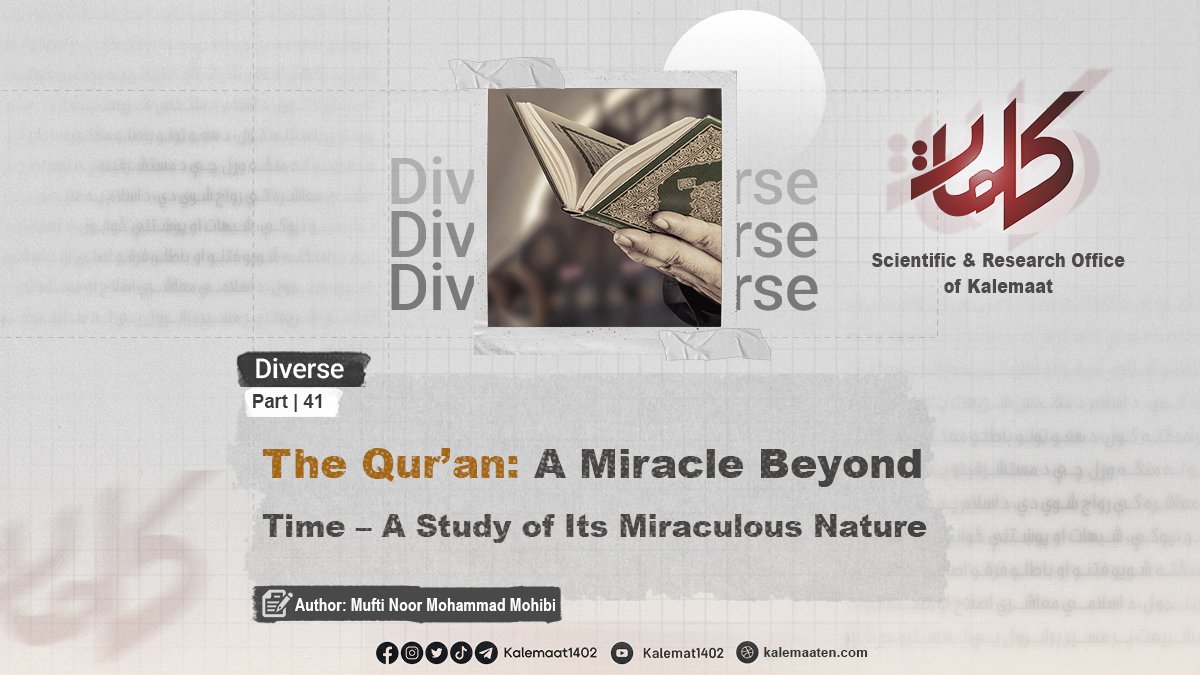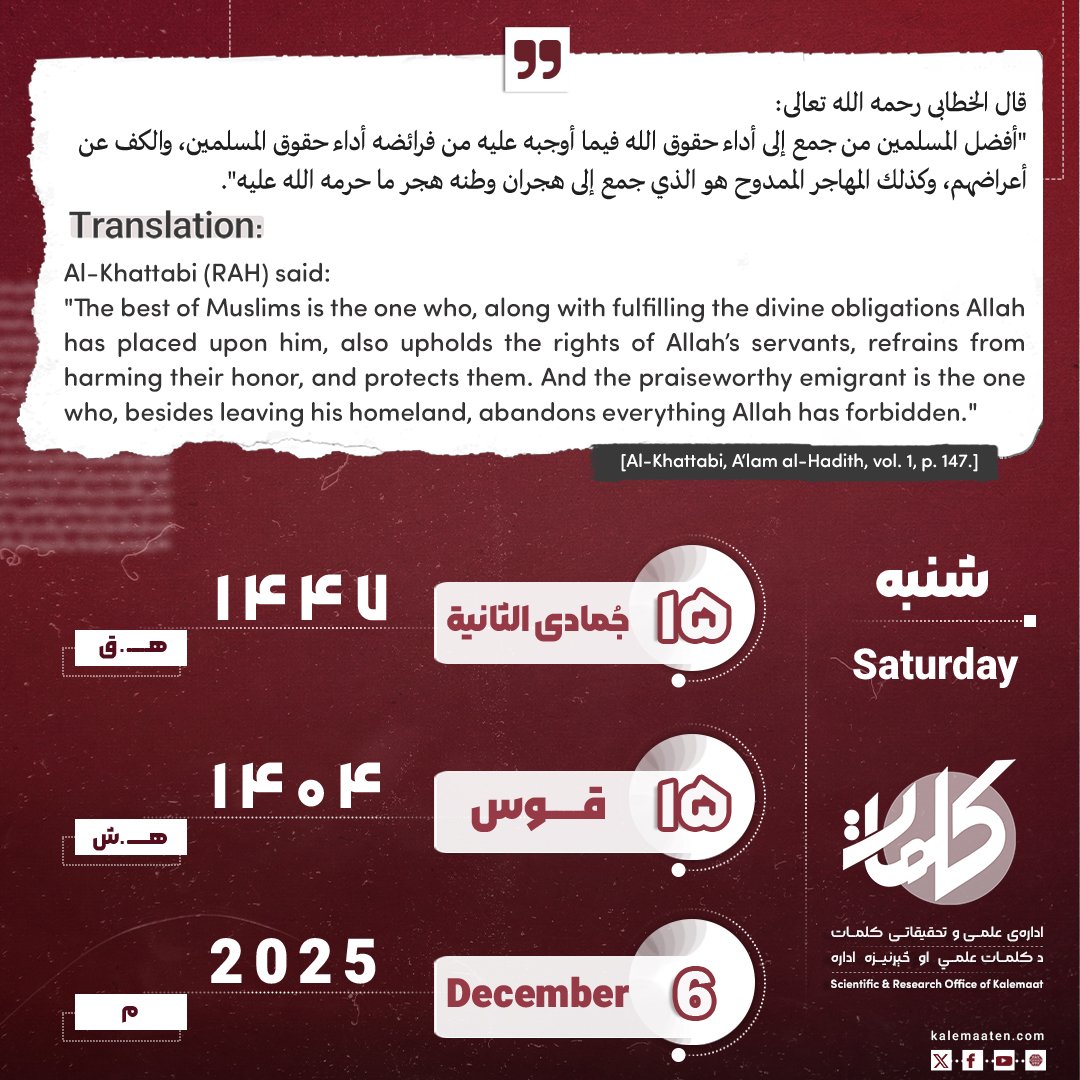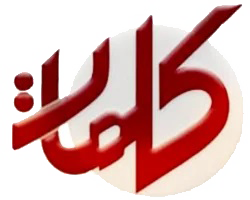
Author: D.r Noor Mohammad Mohibi
The Quran: A Miracle Beyond Time- A Study of Its Miraculous Nature (Part 41)
The Compatibility of Modern Embryology with the Teachings of the Holy Quran and the Prophetic Sunnah
Concepts have become clear that are remarkably consistent with the religious texts of Islam with the increasing progress of biological science, especially in the field of “Embryology”. In this section, a scientific analysis of one of the hadiths of the Prophet Muhammad (peace and blessings of Allah be upon him) is discussed, which states: “ما من كل الماء يكون الولد. وإذا أراد الله خلق شيء لم يمنعه شيء.” Translation: “A child is not created from all water (seminal fluid), and when Allah wills to create something, nothing can prevent it.” [1]
We will also examine the verses of the Quran about the stages of the creation of the embryo; In particular, the verse in which Allah says: ثُمَّ جَعَلۡنَٰهُ نُطۡفَةٗ فِي قَرَارٖ مَّكِينٖ Translation: “Then We placed him as a sperm in a fixed place.” [Al-Mu’minun: 13]
Analysis of these texts in the light of contemporary scientific findings reveals an unparalleled level of harmony between divine revelation and scientific discoveries.
Basic Concepts: Sperm, Testicle, and Fertilization
Today science has proven that during ejaculation, “between 300 and 500 million sperm” enter the female reproductive system. Each of these sperms has a precise structure:
Sperm head: carrier of genetic material (DNA)
Neck: source of energy
Tail: means of movement
These sperms float in a fluid that protects, nourishes and facilitates movement.
Of these, only “a few hundred sperm” reach the egg (ovum), and only “one sperm succeeds in penetrating” it. This point is precisely stated in the hadith of the Prophet (peace and blessings of Allah be upon him):
“ما من كل الماء يكون الولد. وإذا أراد الله خلق شيء لم يمنعه شيء.” Translation: “A child is not created from all water (seminal fluid), and when Allah wills to create something, nothing can prevent it.” [2]
This description is not only accurate, but also in line with the findings of expertise in cell biology that explain the role of natural selection of sperm.
Sperm penetration into the egg: molecular analysis
In order to understand the miracle of this process, we need to look at the “molecular level of fertilization”:
The sperm head has an “enzymatic cap” (acrosome).
When it encounters the egg wall, these enzymes are secreted, and “mix” the egg’s protective layer.
After the sperm enters, the egg immediately creates an “occlusive reaction” and prevents other sperm from entering.
From a scientific perspective, these reactions are very precise, timed, and controlled. This amazing order can be a testament to the Creator’s plan.
Genetics, Heredity and Vital Codes
The nucleus of each sperm and each egg carries a “set of genes” that contains the biological information of the individual. This information includes:
Physical traits (skin color, height, hair type, etc.)
Physiological characteristics (hormones, enzymes)
Behavioral capacities and even genetic predispositions to diseases
These genes are activated in a “programmed” way. For example:
During puberty, genes related to sexual changes are activated.
During pregnancy, genes for tissue formation come into action in turn.
All of these programs are stored in the two primary cells – sperm and egg. The Holy Quran states in a comprehensive and precise manner: “إِنَّا خَلَقۡنَا ٱلۡإِنسَٰنَ مِن نُّطۡفَةٍ أَمۡشَاجٖ نَّبۡتَلِيهِ” Translation: “We created man from a mixed sperm (from spermatozoon and ovum), and while We are testing him later (with duties and tasks).” [Al-Insan: 2]
The word «أمشاج» means “mixed” and clearly refers to the combination of the two genetic materials of man and woman.
The Quranic word: «قَرَارٖ مَّكِينٖ» is mentioned in the blessed verse of the Quran: ثُمَّ جَعَلۡنَٰهُ نُطۡفَةٗ فِي قَرَارٖ مَّكِينٖ Translation: “Then We placed him as a sperm in a fixed place.” [Mu’minun: 13]
In this verse, there are two key words:
-
«قرار»: The mother’s womb is a stable and suitable place for the embryo to settle.
This organ is located in the “geometric center of the female pelvis.”
-
«مكين»: Meaning “firm” and “protected.”
The womb, with its “strong muscular walls,” “vast blood network,” and “ligamentous support structure,” is the best environment for the development of the embryo. On the other hand, the fetus is located inside the “amniotic sac” and floats in a fluid that absorbs external shocks. This is deeply reflected in the Quranic expression «قَرَارٖ مَّكِينٖ».”
The reaction of Western scientists in recent centuries
It was believed in the West that only one parent (male or female) played a role in the creation of the fetus until the 18th century. However, the Prophet (peace and blessings of Allah be upon him) said in a narration: “يا يهودي، من كل يخلق، من نطفة الرجل، ومن نطفة المرأة، فأما نطفة الرجل فنطفة غليظة، منها العظم والعصب، وأما نطفة المرأة فنطفة رقيقة، منها اللحم والدم” Translation: “O Jew! Human is created from two sperm: from the sperm of a man and from the sperm of a woman. The male sperm is thick (concentrated) from which bones and nerves emerge, and the female sperm is thin (diluted) from which flesh and blood emerge.” [3]
In this hadith, a precise reference is made to the “combined role of both sperms”; while subsequent centuries in the West have been involved in incorrect and contradictory theories for years.
In the end, it is said in short: The statements of the Holy Quran and the Prophetic Sunnah about the initial stages of human life are highly accurate and consistent with modern discoveries, not only from a spiritual point of view, but also from a scientific point of view.
All of this shows that “Islam is not in conflict with science, but in harmony with it.” As the Holy Quran has promised: سَنُرِيهِمۡ ءَايَٰتِنَا فِي ٱلۡأٓفَاقِ وَفِيٓ أَنفُسِهِمۡ حَتَّىٰ يَتَبَيَّنَ لَهُمۡ أَنَّهُ ٱلۡحَقُّۗ Translation: “We will show them Our signs in the heavens and the earth, which is the vast universe, and within themselves, which is the small universe, until it becomes clear to them that Islam and the Quran are the truth.” [Fussilat: 53] [4]
Continues…
References:
- Sahih Muslim, Book of Marriage, Chapter on the Ruling on Coitus Interruption, Hadith No. 1438, Vol. 2, p. 1064, ed. Abd al-Baqi.
- Sahih Muslim, Book of Marriage, Chapter on the Ruling on Coitus Interruption, Hadith No. 1438, Vol. 2, p. 1064, ed. Abd al-Baqi.
- Musnad Ahmad, Musnad Abdullah ibn Mas’ud (may Allah be pleased with him), Hadith No. 4438, Vol. 4, p. 258, ed. Ahmad Shakir.
- The summary from: Encyclopedia of the Scientific Miracles of the Qur’an and Sunnah, Vol. 1, pp. 88-91.



